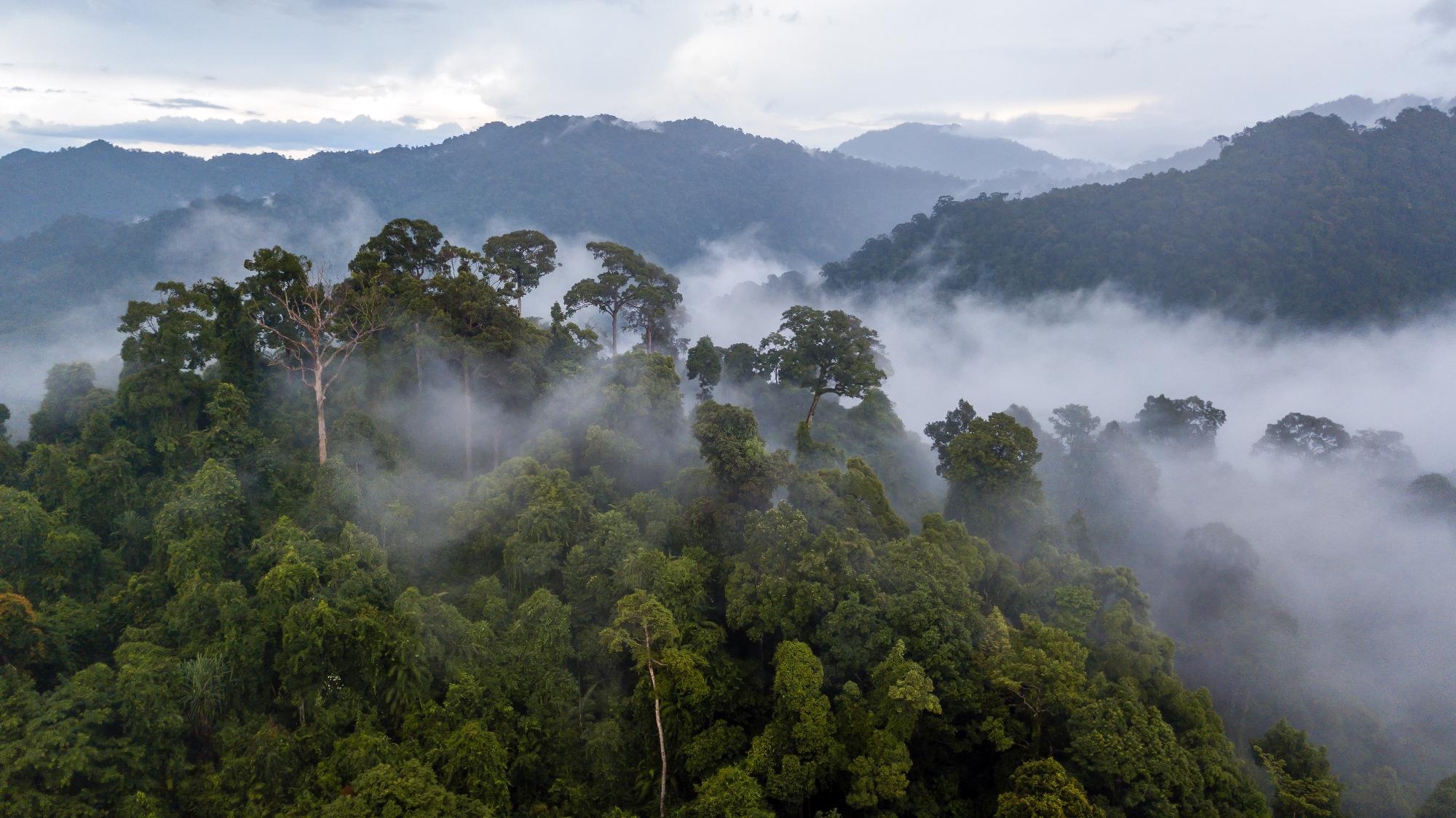
Image Credit: Shutterstock / Richard Whitcombe
A new study has indicated that the ability of plants to absorb atmospheric carbon could be halved within the next two decades if global temperatures continue to rise at the current rate.
The ability of Earth’s plant life to absorb and use atmospheric carbon could be reduced by as much as 50% over the next twenty years, should global temperatures continue to rise unabated.
This is the finding of a new study published in Science Advances¹ by a research team including scientists from Northern Arizona University, the Woodwell Climate Research Center, and the University of Waikato, New Zealand.
The team was able to identify a critical temperature ‘tipping point’ beyond which the ability of plants to capture and store atmospheric carbon decreases in lockstep with rises in temperature.
The finding was reached after the team analyzed over two decades of data collected by measurement towers across major distinct biological communities of plants and animals known as biomes.
The Earth has a steadily growing fever, and much like the human body, we know every biological process has a range of temperatures at which it performs optimally and ones above which function deteriorates. So, we wanted to ask, how much can plants withstand?
Katharyn Duffy, Lead Author on the study and Postdoctoral Researcher, NAU
The study was the first to detect a temperature threshold for photosynthesis on a global scale rather than in lab-based tests. And with the Copernicus Climate Change Service (C35) and other climate monitoring organizations expected to declare 2020 as the joint hottest year since records began (with 2016)², the results are alarming.
A Sharp Decline in Photosynthesis
The activity of land-plants and soil microbes — collectively known as the terrestrial biosphere — is responsible for much of the exchange of carbon dioxide and oxygen in the atmosphere, which could technically be considered Earth’s ‘breathing process.’
The key to this activity in ecosystems is photosynthesis, which ‘pulls in’ carbon dioxide before releasing it back into the atmosphere via the respiration of plants and microbes.
On average, over the last few decades, this activity has taken in more carbon than it produces — a deficit that has helped mitigate climate change. Record-breaking high temperatures indicate that this trend is about to change, however.
This is evidenced by a sharp decline in photosynthesis noticed in the data by Duffy. This decline occurred worldwide, in almost every biome, at distinct temperatures when other confounding effects, such as incident sunlight, were taken into account.
The data collected by the team gives researchers a real-world picture of how the world’s ecosystems are reacting to environmental changes brought about by rising temperatures. It reveals that, just like with human beings and other organisms, ecosystems have an optimal temperature at which they prosper.
We know that the temperature optima for humans lie around 37⁰C. But we in the scientific community didn’t know what those optima were for the terrestrial biosphere.
Katharyn Duffy, Lead Author on the study and Postdoctoral Researcher, NAU
Optimal Temperatures for Photosynthesis are Already Exceeded
Researchers at Woodwell Climate and the University of Waikato recently developed a new model with its basis in the principles of thermodynamics designed to discover optimal temperatures — the MacroMolecular Rate Theory (MMRT).
Duffy teamed up with the researchers and used MMRT to calculate temperature curves for the major biomes, and for the Earth in general. This revealed peaks in carbon uptake at 18⁰C for 85% of the world’s plants — cereal grains like wheat, rice, barley, oats, and most trees, classified as C3 plants. The corresponding temperature for C4 plants — like maize, sugar cane, and some grasses — was 10⁰C higher at 28⁰C.
The reason this is so concerning is that at the temperatures recorded, the team found no corresponding drop in the respiration of carbon dioxide. This means, in many ecosystems, a continued rise in temperature will cause photosynthesis to slow whilst causing no such decline in the respiration rate.
Ultimately, this has the result of switching these systems from ‘carbon sinks’ — an area that captures more carbon than it releases — to carbon sources. A factor that can only serve to accelerate climate change.
Time to Change
Whilst the optimal temperatures for photosynthesis are being exceeded, this is currently only the case in less than 10% of major biomes. If the rate of carbon emissions continues unabated, the team estimates that by around 2050 up to half of the world’s biomes will have reached or exceeded this tipping point.
The first to reach this point will likely be some of the most carbon-rich — tropical rainforests in the Amazon and Southeast Asia, and boreal forests in Russia and Canada.
The most striking thing our analysis showed is that the temperature optima for photosynthesis in all ecosystems were so low. Without curbing warming to remain at or below the levels established in the Paris Climate Accord, the land carbon sink will not continue to offset our emissions and buy us time.
Vic Arcus, Co-author on the paper and Biologist, The University of Waikato
References
¹ Duffy. K. A., Schwalm. C. R., Arcus. V. L., et al, [2021], ‘How close are we to the temperature tipping point of the terrestrial biosphere?’ Science Advances, [DOI: 10.1126/sciadv.aay1052]
² The State of the Global Climate 2020, WMO, [2020], [https://public.wmo.int/en/our-mandate/climate/wmo-statement-state-of-global-climate]
Disclaimer: The views expressed here are those of the author expressed in their private capacity and do not necessarily represent the views of AZoM.com Limited T/A AZoNetwork the owner and operator of this website. This disclaimer forms part of the Terms and conditions of use of this website.